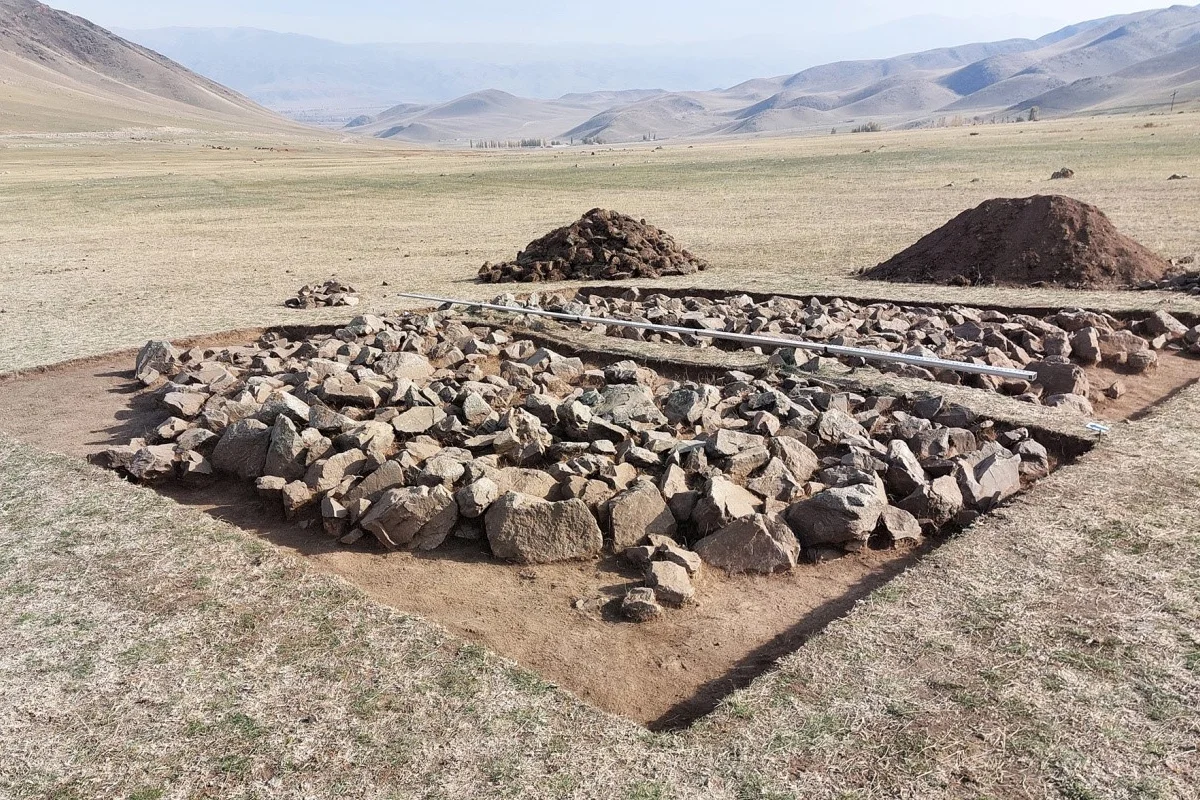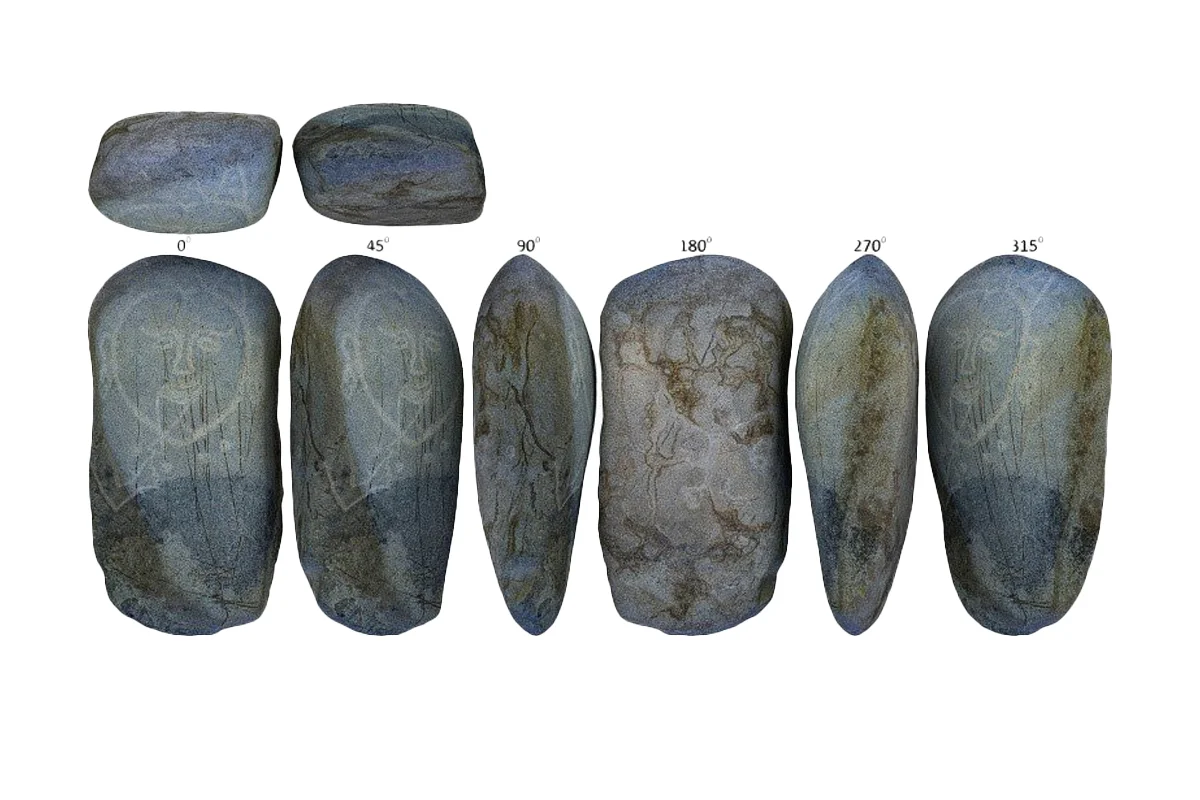Archaeologists in Kyrgyzstan have discovered a ritual stone depicting a figure wearing a three-horned headdress in the Kemin district of the Chuy region, Kyrgyzstan.
The discovery was made in a kurgan burial mound which is part of the Borombay archaeological complex – a burial ground containing kurgans from early Turkic era and possibly earlier cultures, such as the pre-Turkic Kenkol culture.
Professor Alexey Tishkin who led the excavation, said: “The female figure with a three-horned headdress is rare evidence of the symbolism and rituals of the early Turkic era. It sheds light on the culture of nomadic peoples in Central Asia.”
Archaeologists believe that the figure is likely a representation of spiritual or societal roles attributed to women in early Turkic society, while the headdress itself could symbolise authority or ritual divinity.

According to experts, the kurgan where the stone was unearthed has no known parallels with sites in the Altai region, which also contains additional structures resembling “hekersur” type monuments specific to the nomadic peoples of Central Asia.
A study of the wider area within the Borombay complex has also revealed many kurgans looted or destroyed, some of which occurred during the past construction of nearby highways.
Experts believe that the female figure will provide new insights into the cultural and symbolic landscape of early Turkic peoples, particularly regarding the role of women in spiritual and communal life.
Continued excavations aim to decode the artistic and ritual meaning of the three-horned headdress, which may represent a unique regional expression within the broader traditions of the steppe civilisations.
Header Image Credit : Institute of Turkology and Altaistics
Sources : Institute of Turkology and Altaistics





